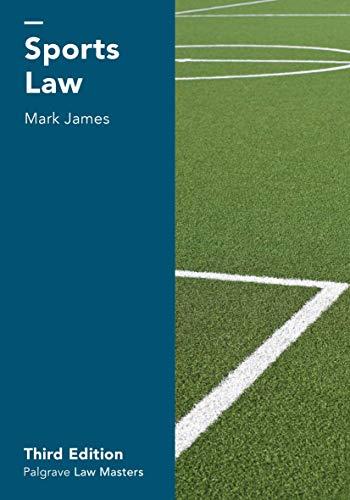Question
Craig is a young man who works as a salesperson on a sales team in Seattle, selling television ads for a local station. He reports
Craig is a young man who works as a salesperson on a sales team in Seattle, selling television ads for a local station. He reports to a Sales Manager, who reports to the General Manager of the station, a woman named Susan. Susan works in the Tacoma office of the station, but she visits Seattle often as part of her duties. When Susan visits, she spends a lot of time in Craig's office, openly flirting with him in full view of others, including his supervisor. He admittedly engages willingly in the flirtation, calling her pet names and joking with others in the office about their "relationship." On several occasions outside the workplace, during social events that are sometimes sponsored by the station and sometimes are purely social, Susan gets very drunk and gropes Craig openly. He rebuffs these advances. One particularly explosive evening, Susan makes quite a scene after Craig refuses her again, screaming that he is "finished" and she will have him fired. Craig reports this final scene to his Sales Manager, who reports it up the chain to the HR VP. In so doing, she follows the requirements of the company's sexual harassment prevention policy and reporting procedure (on which all parties involved were annually trained). The VP has a meeting with Craig to discuss the matter, and Craig indicates only in vague terms that he had been sexually propositioned by Susan, and that he will handle it on his own and does not want further investigation. He wants his report noted in his file, but wants nothing further to be done. The VP does nothing further. Five months later, Craig has not seen Susan at all. Craig and his colleague both receive corrective actions for badly slumping sales from their Sales Manager - Susan is not involved in the discipline. Craig and his colleague are both placed on a Performance Improvement Plan. Craig submits his letter of resignation a week later. He timely files an EEOC charge and later a lawsuit, for sexual harassment and retaliatory constructive discharge for reporting the harassment to the VP.
USING LEGAL ANALYSIS ONLY, how will the claim be resolved and why?
You are expected to enumerate the elements of the prima facie case, apply the relevant facts to each of those elements to determine whether the plaintiff could establish a prima facie case as well as the consequence of establishing or not establishing a prima facie case. Then you will be expected to describe any defense or defenses the employer could assert by setting forth the requisite elements of each defense and then applying the relevant facts to those elements in formulating and stating your conclusion about whether the defense could be established and, if so, the legal consequence or consequences of establishing that defense.
In other words, you are expected to offer a LEGAL analysis and not a description of what might be a useful best standard or what might improve employee morale.
Conclusions without explanations of the type just set forth are not sufficient.
Step by Step Solution
There are 3 Steps involved in it
Step: 1

Get Instant Access to Expert-Tailored Solutions
See step-by-step solutions with expert insights and AI powered tools for academic success
Step: 2

Step: 3

Ace Your Homework with AI
Get the answers you need in no time with our AI-driven, step-by-step assistance
Get Started


